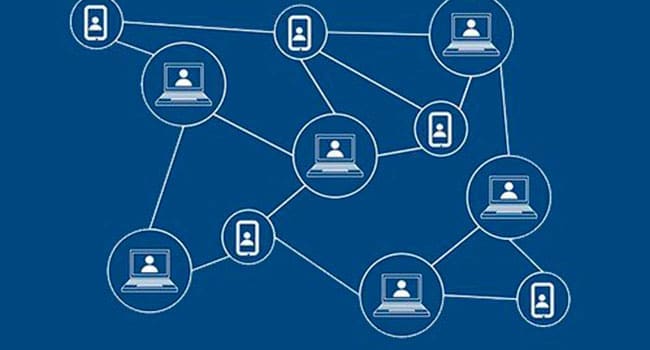 The cryptocurrency revolution has introduced some interesting technology, notably the blockchain concept, which holds great potential for the agri-food sector.
The cryptocurrency revolution has introduced some interesting technology, notably the blockchain concept, which holds great potential for the agri-food sector.
Blockchain is a way of storing and sharing information across a network of users in an open virtual space. The technology allows users to look at all transactions simultaneously and in real-time.
In the food industry, the potential is vast.
For example, a retailer could easily discover who else his supplier has dealt with.
And since transactions are not stored in a single location, market information is almost impossible to hack.
On the consumer side, reading a simple QR code with a smartphone could trace a meat product right back to its source. Data such as an animal’s date of birth, use of antibiotics, vaccinations and where the livestock was harvested can easily be conveyed to the consumer.
Blockchain makes a supply chain more transparent at an all new level. It also empowers the entire chain to be more responsive to any food safety disasters. Massive organizations such as Nestle and Unilever are considering blockchain technologies for that reason.
Walmart, which sells 20 per cent of all food in the United States, has just completed blockchain pilot projects.
Prior to using blockchain, Walmart conducted a traceback test on mangoes in one of its stores. It took six days, 18 hours and 26 minutes to trace mangoes back to the originating farm. By using blockchain, Walmart can provide all the information the consumer wants in 2.2 seconds. During a food contamination outbreak, six days is an eternity. So blockchain technology can save lives.
Blockchain also means specific products to be traced at any time, helping reduce food waste. Contaminated products can be traced easily and quickly, while safe foods can remain on the shelves and not go to landfills.
Blockchain will allow everyone to be paid more quickly, from farm to plate. Farmers could sell more quickly and be properly compensated, since market data would be readily available and validated.
The technology could offer a legitimate option for farmers who now feel compelled to rely on marketing boards to sell their commodities. Blockchain could prevent price coercion and retroactive payments, which we have seen across the food supply chain.
In essence, it could Uberize the agri-food sector by eliminating middlemen and lowering transaction fees. That should mean fairer pricing. And it should help smaller outfits get more market attention.
However, it will work only if the data at the source is accurate. Current industry practices are much more open to human error. Much of the compliance data is audited by third parties and stored on paper or in a centralized database. These databases are highly vulnerable to informational inaccuracies, hacking, high operating costs, and intentional errors motived by corruption and fraudulent behaviour.
With blockchain, mistakes would be traceable to individual culprits. Given recent food fraud scandals, this feature is not trivial.
The technology provides permanent records and data sharing between disparate actors in a food value chain. Many retailers have sold fraudulent food products unknowingly. Blockchain could put an end to that.
Blockchain technology offers an affordable solution to small, medium and large organizations.
However, there are noteworthy limitations. The amount of information that can be processed is limited. And confidentiality depends on securing contracts between several organizations. Balancing confidentiality with transparency will be tricky, since the agri-food arena is full of secrets. For many, then, blockchain is just a solution looking for a problem.
Blockchain is really in its infancy and most people are uncertain about its potential. But the innovation in blockchain architectures, applications and business concepts is happening rapidly. It’s a decentralized, open-source organism that is challenging to grasp for many, including governments.
In the food industry, innovation is always desirable until it becomes real. Once it manifests itself, guards go up. Some organizations move ahead while others wait to see what happens.
The marketplace is fuelled with confusion due to the Bitcoin phenomena, which many label as irrational and ridiculous. Cryptocurrencies allow for transactions to occur while using blockchain technology, but it remains just an option.
So the most important challenge for blockchain technology remains participation. All parties must adopt the technology in order for it to work. In food distribution, not all companies are equal – some have more power than others. A successful integration of the blockchain requires the engagement of all participating organizations. Walmart’s blockchain will likely be successful because it’s Walmart. But thousands of companies don’t have the same clout.
Food industry leaders should embrace blockchain, incorporating it in digital strategies now being employed across the industry. That would enhance agri-food transparency, productivity, competitiveness and sustainability.
But before we get too excited, research must create evidence-based blockchain solutions to democratize data for the entire system.
Dr. Sylvain Charlebois is senior director of the agri-food analytics lab and a professor in food distribution and policy at Dalhousie University.
Sylvain is a Troy Media Thought Leader. Why aren’t you?
The views, opinions and positions expressed by columnists and contributors are the author’s alone. They do not inherently or expressly reflect the views, opinions and/or positions of our publication.

